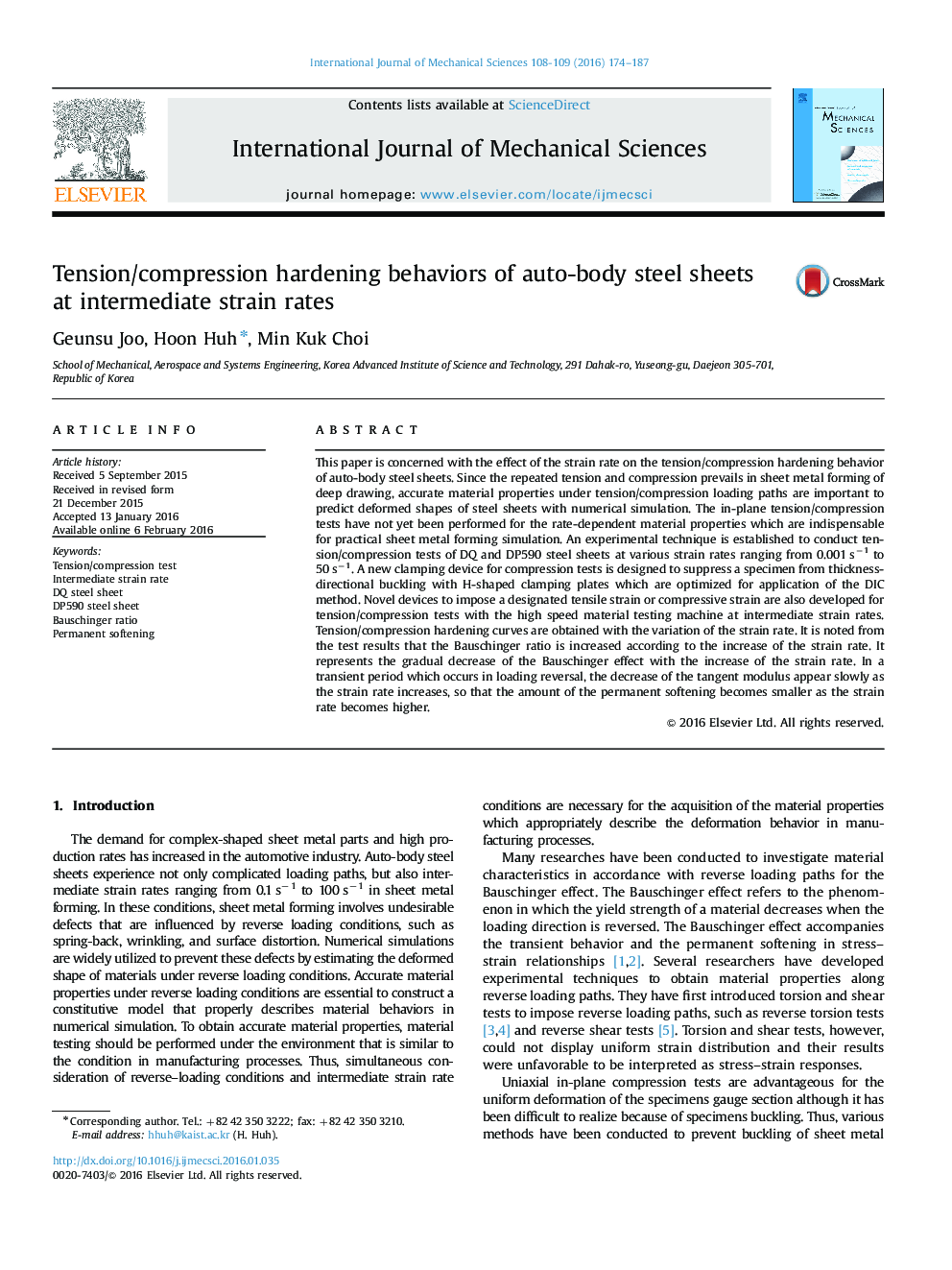| کد مقاله | کد نشریه | سال انتشار | مقاله انگلیسی | نسخه تمام متن |
|---|---|---|---|---|
| 780036 | 1464975 | 2016 | 14 صفحه PDF | دانلود رایگان |
• Effect of the strain rate on the tension/compression hardening behavior.
• Clamping device to prevent buckling of a sheet metal under compression.
• Stopping jig systems for tension/compression tests of sheet metals at intermediate strain rates.
• Tension/compression hardening behavior of DQ and DP590 at strain rates from 0.001 s−1 to 50 s−1.
• Bauschinger effect and the permanent softening with respect to the strain rate.
This paper is concerned with the effect of the strain rate on the tension/compression hardening behavior of auto-body steel sheets. Since the repeated tension and compression prevails in sheet metal forming of deep drawing, accurate material properties under tension/compression loading paths are important to predict deformed shapes of steel sheets with numerical simulation. The in-plane tension/compression tests have not yet been performed for the rate-dependent material properties which are indispensable for practical sheet metal forming simulation. An experimental technique is established to conduct tension/compression tests of DQ and DP590 steel sheets at various strain rates ranging from 0.001 s−1 to 50 s−1. A new clamping device for compression tests is designed to suppress a specimen from thickness-directional buckling with H-shaped clamping plates which are optimized for application of the DIC method. Novel devices to impose a designated tensile strain or compressive strain are also developed for tension/compression tests with the high speed material testing machine at intermediate strain rates. Tension/compression hardening curves are obtained with the variation of the strain rate. It is noted from the test results that the Bauschinger ratio is increased according to the increase of the strain rate. It represents the gradual decrease of the Bauschinger effect with the increase of the strain rate. In a transient period which occurs in loading reversal, the decrease of the tangent modulus appear slowly as the strain rate increases, so that the amount of the permanent softening becomes smaller as the strain rate becomes higher.
Journal: International Journal of Mechanical Sciences - Volumes 108–109, April 2016, Pages 174–187
